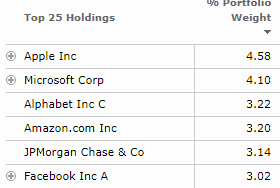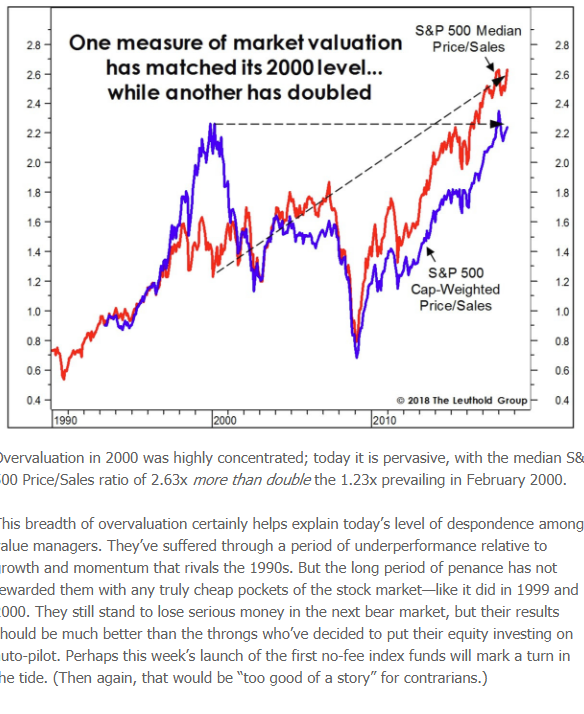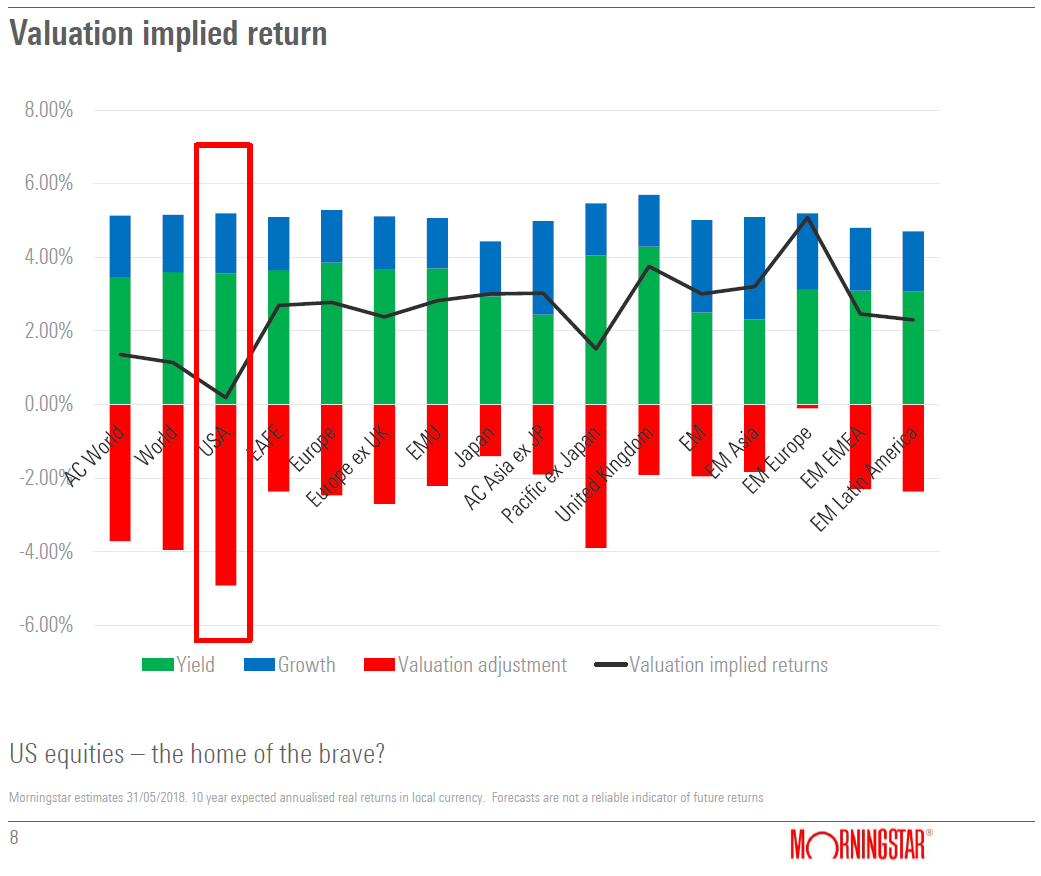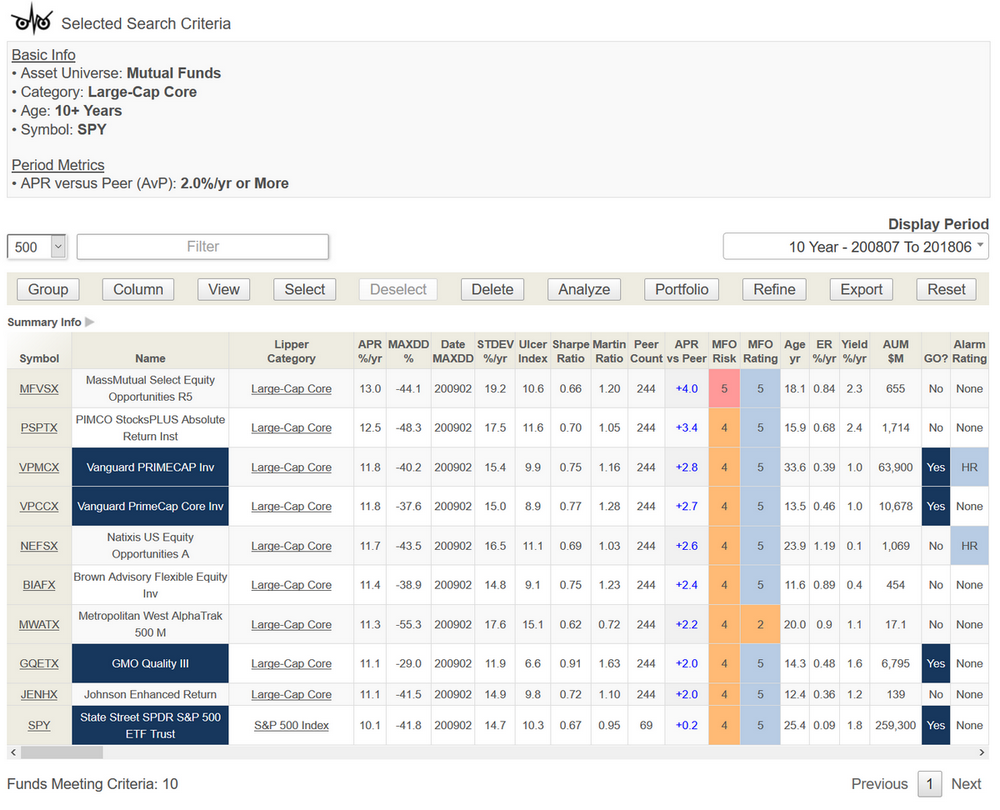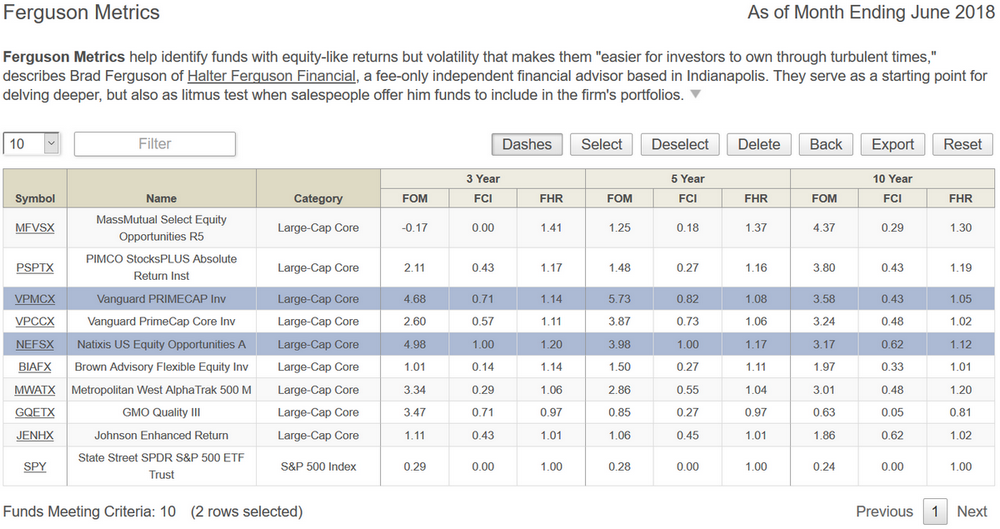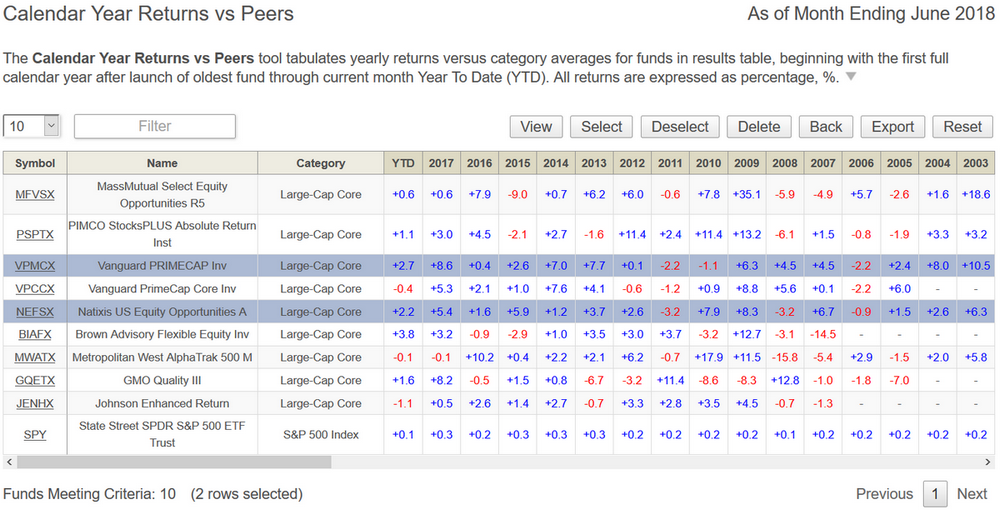| Ticker |
Fund |
Out with the old |
In with the new |
Dt |
| AGFQX |
361 Global Managed Futures Strategy Fund |
Clifford Stanton will no longer serve as a portfolio manager to the fund. |
Blaine Rollins, Aditya Bhave, Jason Leupold, and John Riddle will continue to serve as portfolio managers of the fund. |
9/18 |
| AGMQX |
361 Macro Opportunity Fund |
Clifford Stanton will no longer serve as a portfolio manager to the fund. |
Blaine Rollins, Aditya Bhave, and Jason Leupold will continue to serve as portfolio managers of the fund. |
9/18 |
| AMFQX |
361 Managed Futures Strategy Fund |
Clifford Stanton will no longer serve as a portfolio manager to the fund. |
Blaine Rollins, Aditya Bhave, Jason Leupold, John Riddle and Randall Bauer will continue to serve as portfolio managers of the fund. |
9/18 |
| AIEQ |
AI Powered Equity ETF (AIEQ) |
No one, but . . . |
Ning Shen joins Samuel Masucci, James Francis, and Devin Ryder on the management team. |
9/18 |
| AHLAX |
American Beacon AHL Managed Futures Strategy Fund |
Nick Granger will no longer serve as a portfolio manager for the fund. |
Matthew Sargaison will run the fund with Russell Korgaonkar. |
9/18 |
| ARTGX |
Artisan Global Value Fund |
N. David Samra will no longer manage the fund. |
Daniel O’Keefe will continue to manage the fund and is joined by Justin Bandy and Michael McKinnon. |
9/18 |
| ARTKX |
Artisan International Value Fund |
Daniel O’Keefe will no longer manage the fund. |
N. David Samra will continue to manage the fund and is joined by Ian McGonigle and Joseph Vari. |
9/18 |
| BXEAX |
Barings Emerging Markets Debt Blended Total Return Fund |
No one, but . . . |
Natalia Krol joins Ricardo Adrogué and Cem Karacadag in managing the fund. |
9/18 |
| BAMBX |
BlackRock Alternative Capital Strategies Fund |
No one, but . . . |
Jeffrey Rosenberg joins Tom Parker and Scott Radell in managing the fund. |
9/18 |
| MDEFX |
BlackRock Eurofund |
Nigel Bolton and Brian Hall are no longer listed as portfolio managers for the fund. |
Andreas Zoellinger will now manage the fund. |
9/18 |
| ITEQ |
BlueStar Israel Technology ETF (ITEQ) |
No one, but . . . |
Ning Shen joins Samuel Masucci, James Francis, and Devin Ryder on the management team. |
9/18 |
| BPGIX |
Boston Partners Global Equity Fund |
No one, but . . . |
Joshua White joins Joshua Jones, Christopher Hart, and Joseph Feeney in managing the fund. |
9/18 |
| BGRSX |
Boston Partners Global Long/Short Fund |
No one, but . . . |
Joshua White joins Joshua Jones, Christopher Hart, and Joseph Feeney in managing the fund. |
9/18 |
| BPLEX |
Boston Partners Long/Short Equity Fund |
No one, but . . . |
Patrick Regan joins Robert Jones in managing the fund. |
9/18 |
| BUFEX |
Buffalo Large Cap Fund |
Elizabeth Jones is no longer listed as a portfolio manager for the fund. |
Alexander Hancock will now manage the fund. |
9/18 |
| ETAFX |
Carillon Cougar Tactical Allocation Fund |
James Breech will no longer serve as a portfolio manager for the fund. |
Abdullah Sheikh will continue to manage the fund. |
9/18 |
| CFRAX |
Catalyst Floating Rate Income Fund |
Tom Wojczak is no longer listed as a portfolio manager for the fund and Princeton Advisory Group is no longer a subadvisor of the fund. |
Stan Sokolowski will now manage the fund. |
9/18 |
| CAGOX |
Cavalier Growth Opportunities Fund |
Other managers are no longer listed. |
As of September 1, Brian Shevland and Lee Calfo will manage the fund. |
9/18 |
| CAVTX |
Cavalier Tactical Rotation Fund |
Other managers are no longer listed. |
As of September 1, Dr. Henry Ma will manage the fund. |
9/18 |
| DSGAX |
Dreyfus Select Managers Small Cap |
No one, but . . . |
Alexi Makkas joins the other 19 or so managers. |
9/18 |
| MJ |
ETFMG Alternative Harvest ETF |
No one, but . . . |
Ning Shen joins Samuel Masucci, James Francis, and Devin Ryder on the management team. |
9/18 |
| IFLY |
ETFMG Drone Economy Strategy ETF |
No one, but . . . |
Ning Shen joins Samuel Masucci, James Francis, and Devin Ryder on the management team. |
9/18 |
| HACK |
ETFMG Prime Cyber Security ETF |
No one, but . . . |
Ning Shen joins Samuel Masucci, James Francis, and Devin Ryder on the management team. |
9/18 |
| SILJ |
ETFMG Prime Junior Silver ETF |
No one, but . . . |
Ning Shen joins Samuel Masucci, James Francis, and Devin Ryder on the management team. |
9/18 |
| IPAY |
ETFMG Prime Mobile Payments ETF |
No one, but . . . |
Ning Shen joins Samuel Masucci, James Francis, and Devin Ryder on the management team. |
9/18 |
| GAMR |
ETFMG Video Game Tech ETF |
No one, but . . . |
Ning Shen joins Samuel Masucci, James Francis, and Devin Ryder on the management team. |
9/18 |
| ETHO |
Etho Climate Leadership U.S. ETF |
No one, but . . . |
Ning Shen joins Samuel Masucci, James Francis, and Devin Ryder on the management team. |
9/18 |
| BEARX |
Federated Prudent Bear Fund |
Lila Murphy will no longer serve as a portfolio manager for the fund. |
P. Ryan Bend and Chad Hudson will continue to manage the fund. |
9/18 |
| FICDX |
Fidelity Canada Fund |
Risteard Hogan is no longer listed as a portfolio manager for the fund. |
Ryan Oldham has been managing the fund since June 20, 2018. |
9/18 |
| FIEUX |
Fidelity Europe Fund |
Stefan Lindblad is no longer listed as a portfolio manager for the fund. |
Andrew Sergeant has been managing the fund since June 1, 2018. |
9/18 |
| Various |
Fidelity Freedom Index Funds |
No one, but . . . |
Finola McGuire Foley joins Andrew Dierdorf and Brett Sumsion in managing the funds. |
9/18 |
| FFGCX |
Fidelity Global Commodity Stock Fund |
Joe Wickwire will no longer serve as a portfolio manager for the fund. |
Jody Simes will now manage the fund. |
9/18 |
| FDCPX |
Fidelity Select Computers Portfolio |
Christopher Lin will no longer serve as a portfolio manager for the fund. |
Caroline Tall will continue to manage the fund. |
9/18 |
| FSAGX |
Fidelity Select Gold |
It is expected that Joe Wickwire will retire effective as of the close of business on or about March 29, 2019. |
Steve Calhoun joins Joe Wickwire and will continue to manage the fund upon Mssr. Wickwire’s retirement. |
9/18 |
| FPHAX |
Fidelity Select Pharmaceuticals Portfolio |
Asher Anolic is no longer listed as a portfolio manager for the fund. |
Karim Suwwan de Felipe will continue to manage the fund. |
9/18 |
| FSPTX |
Fidelity Select Technology Portfolio |
No one, but . . . |
Nidhi Gupta joins Charlie Chai in managing the funds. It’s expected the Mssr. Chai will retire at the end of the year. |
9/18 |
| FDSCX |
Fidelity Stock Selector Small Cap Fund |
Richard Thompson will no longer serve as a portfolio manager for the fund. |
Jennifer Fo has been named interim co-manager, joining Shadman Riaz, Morgen Peck, and Eirene Kontopoulos, until Mssr. Venanzi’s return. |
9/18 |
| FTRNX |
Fidelity Trend Fund |
No one, but . . . |
Shilpa Mehra joins Daniel Kelley in managing the fund. |
9/18 |
| SCAFX |
Fiera Capital STRONG Nations Currency Fund |
No one, but . . . effective as of August 1, 2018, Jonathan Lewis has resumed his role as lead portfolio manager of the Fund. |
Iraj Kani and Jonathan Lewis will continue to manage the fund. |
9/18 |
| HIOIX |
Fintrust Income and Opportunity Fund |
Hope Lundt and John Mills are no longer listed as portfolio managers for the fund. |
Allen Gillespie, David Lewis, and James Treadwell will now manage the fund. |
9/18 |
| FRBSX |
Franklin Balance Sheet Investment Fund |
Daniel Perrin is no longer listed as a portfolio manager for the fund. |
Grace Hoefig will continue to manage the fund. |
9/18 |
| FAAAX |
Franklin K2 Alternative Strategies Fund |
David Saunders is no longer listed as a portfolio manager for the fund. |
Robert Christian and John Brooks Ritchey are joined by Anthony Zanolla on the management team. |
9/18 |
| TFSIX |
Franklin Mutual Financial Services Fund |
Richard Cetlin is no longer listed as a portfolio manager for the fund. |
Andrew Sleeman and Andrew Dinnhaupt will continue to manage the fund. |
9/18 |
| GMAMX |
Goldman Sachs Multi-Manager Alternatives Fund |
Robert Mullane is no longer listed as a portfolio manager for the fund. |
Betsy Gorton and Kent Clark will continue to manage the fund. |
9/18 |
| HIINX |
Harbor International Fund |
Howard Appleby, Jean-Francois Ducrest, and James LaTorre are no longer listed as portfolio managers for the fund. |
Simon Todd, Michael Nickson, William MacLeod, Simon Somerville, Neil Ostrer, Nick Longhurst, Michael Godfrey, David Cull, Charles Carter, and William Arah will now manage the fund. |
9/18 |
| HIIGX |
Harbor International Growth Fund |
Tom Walsh will no longer serve as a portfolio manager for the fund. |
Moritz Sitte, Sophie Earnshaw, Joseph Faraday, Iain Campbell, and Gerard Callahan will continue to manage the fund. |
9/18 |
| ITHAX |
Hartford Capital Appreciation Fund |
Kent Stahl has announced his plan to retire effective December 31,2018. |
Gregg Thomas will continue to manage the fund. |
9/18 |
| HIACX |
Hartford Capital Appreciation HLS Fund |
Kent Stahl has announced his plan to retire effective December 31,2018. |
Gregg Thomas will continue to manage the fund. |
9/18 |
| HINVX |
Heartland International Value Fund |
Michael Jolin will no longer serve as a portfolio manager for the fund. |
Robert Sharpe will continue to manage the fund. |
9/18 |
| ICMBX |
Intrepid Capital Fund |
Jayme Wiggins will no longer serve as a portfolio manager for the fund. |
Mark Travis and Jason Lazarus will continue to manage the fund. |
9/18 |
| ICMAX |
Intrepid Endurance Fund |
Jayme Wiggins will no longer serve as a portfolio manager for the fund. |
Mark Travis will now manage the fund. |
9/18 |
| ICMTX |
Intrepid Select Fund |
Jayme Wiggins will no longer serve as a portfolio manager for the fund. |
Clay Kirkland and Mark Travis will now manage the fund. |
9/18 |
| GLTAX |
Invesco Global Targeted Returns Fund |
No one, but . . . |
Danielle Singer joins Richard Batty, David Jubb, David Millar, and Gwilym Satchell. |
9/18 |
| IARAX |
Invesco Real Estate Fund |
No one, but . . . |
Grant Jackson joins Mark Blackburn, Paul Curbo, Joe Rodriguez, Jr., Darin Turner, and Ping Ying Wang on the management team. |
9/18 |
| JOLAX |
Janus Henderson Emerging Markets Managed Volatility Fund |
Phillip Whitman is no longer listed as a portfolio manager for the fund. |
Adrian Banner, Vassilios Papathanakos, and Joseph Runnels continue to manage the fund. |
9/18 |
| JGDAX |
Janus Henderson Global Income Managed Volatility Fund |
Phillip Whitman is no longer listed as a portfolio manager for the fund. |
Adrian Banner, Vassilios Papathanakos, and Joseph Runnels continue to manage the fund. |
9/18 |
| JMIAX |
Janus Henderson International Managed Volatility Fund |
Phillip Whitman is no longer listed as a portfolio manager for the fund. |
Adrian Banner, Vassilios Papathanakos, and Joseph Runnels continue to manage the fund. |
9/18 |
| JRSAX |
Janus Henderson U.S. Managed Volatility Fund |
Phillip Whitman is no longer listed as a portfolio manager for the fund. |
Adrian Banner, Vassilios Papathanakos, and Joseph Runnels continue to manage the fund. |
9/18 |
| LITOX |
Lazard Global Realty Equity Portfolio |
Gautam Garg is no longer listed as a portfolio manager for the fund. |
Christopher Hartung joins Jay Leupp in managing the fund. |
9/18 |
| LREOX |
Lazard US Realty Equity Portfolio |
Gautam Garg is no longer listed as a portfolio manager for the fund. |
Christopher Hartung joins Jay Leupp in managing the fund. |
9/18 |
| LSGLX |
Loomis Sayles Global Bond Fund |
Effective March 2019, Kenneth Buntrock, portfolio manager of the fund, will retire. |
David Rolley, Lynda Schweitzer and Scott Service will remain as co-portfolio managers of the fund. |
9/18 |
| LSFAX |
Loomis Sayles Senior Floating Rate and Fixed Income Fund |
Effective March 2019, Kevin Perry, portfolio manager of the fund, will retire. |
John Bell and Michael Klawitter will remain as co-portfolio managers of the fund. |
9/18 |
| LDFVX |
Lord Abbett Fundamental Equity Fund |
Sean Aurigemma is no longer listed as a portfolio manager for the fund. |
Jeff Diamond, So Young Lee, and Eli Rabinowich will now manage the fund. |
9/18 |
| MADFX |
Matrix Advisors Dividend Fund |
Steven Pisarkiewicz has retired and will no longer serve as a portfolio manager for the fund. |
David Katz, Lon Birnholz, Jordan Posner, Steven Roukis, and Stephan Weinberger will continue to manage the fund.. |
9/18 |
| MDIDX |
MFS International Diversification Fund |
Thomas Melendez will no longer be a portfolio manager, effective March 31, 2019. |
Camille Humphries Lee joins Mssr. Melendez in managing the fund. |
9/18 |
| MRSAX |
MFS Research International Fund |
Thomas Melendez will no longer be a portfolio manager, effective March 31, 2019. |
Camille Humphries Lee joins Mssr. Melendez, Jose Luis Garcia, and Victoria Higley in managing the fund. |
9/18 |
| NCEGX |
North Country Equity Growth Fund |
Manuel Orta will no longer serve as a portfolio manager for the fund. |
Adam Horowitz joins Peter Capozzola in managing the fund. |
9/18 |
| QQQX |
Nuveen NASDAQ 100 Dynamic Overwrite Fund |
Keith Hembre is no longer listed as a portfolio manager for the fund. |
Jody Hrazanek will now manage the fund. |
9/18 |
| SPXX |
Nuveen S&P 500 Dynamic Overwrite Fund |
Keith Hembre is no longer listed as a portfolio manager for the fund. |
Jody Hrazanek will now manage the fund. |
9/18 |
| OASVX |
Optimum Small-Mid Cap Value Fund |
Susan Schmidt is no longer listed as a portfolio manager for the fund. |
William Costello joins Menno Vermeulen, Greg Sleight, Puneet Mansharamani, Josef Lakonishok, Guy Lakonishok, Prashant Inamdar, Thomas Lieu, and Grant Taber in managing the fund. |
9/18 |
| PRCGX |
Perritt MicroCap Opportunities Fund |
George Metrou will no longer serve as a portfolio manager for the fund. |
Michael Corbett will continue to manage the fund. |
9/18 |
| LSEIX |
Persimmon Long Short |
Ken Cavazzi is no longer listed as a portfolio manager for the fund. |
David Daglio joins Timothy Melly, Arthur Holley, Gregory Horn, H. George Dai, Daniel Brazeau, and Joshua Bennett in managing the fund. |
9/18 |
| PIBAX |
PGIM Balanced Fund |
Ted Lockwood has retired, as planned. |
Stacie Mintz, John Moschberger, Edward Lithgow, Joel Kallman, Edward Campbell, and Irene Tunkel will continue to serve as portfolio managers of the fund managed by Quantitative Management Associates LLC (QMA). |
9/18 |
| JDUAX |
PGIM Conservative Allocation Fund |
Ted Lockwood has retired, as planned. |
Joal Kallman, Peter Vaicunas, and Edward Campbell will continue to manage the fund. |
9/18 |
| JDAAX |
PGIM Growth Allocation Fund |
Ted Lockwood has retired, as planned. |
Joal Kallman, Peter Vaicunas, and Edward Campbell will continue to manage the fund. |
9/18 |
| PCGAX |
PGIM Income Builder Fund |
Ted Lockwood has retired, as planned. |
Edward Campbell, Rory Cummings, and Peter Vaiciunas will continue to serve as portfolio managers for the segment of the fund managed by Quantitative Management Associates LLC (QMA). |
9/18 |
| JDTAX |
PGIM Moderate Allocation Fund |
Ted Lockwood has retired, as planned. |
Joal Kallman, Peter Vaicunas, and Edward Campbell will continue to manage the fund. |
9/18 |
| PAMGX |
PGIM QMA Defensive Equity Fund |
Ted Lockwood has retired, as planned. |
Edward Campbell, Joel Kallman, Edward Lithgow, and Peter Vaiciunas will continue to serve as portfolio managers for the fund. |
9/18 |
| PUDAX |
PGIM Real Assets Fund |
Ted Lockwood has retired, as planned. |
Edward Keon, Jr., Edward Campbell, Joel Kallman, Rory Cummings, Yesim Tokat-Acikel, and Marco Aiolfi will continue to serve as portfolio managers for the segment of the fund managed by Quantitative Management Associates LLC (QMA). |
9/18 |
| PCGRX |
Pioneer Mid Cap Value Fund |
No one, but . . . |
Timothy Stanish joins Edward Shadek and Raymond Haddad on the management team. |
9/18 |
| PMDAX |
Principal Small-Midcap Dividend Income Fund |
No one, but . . . |
Sarah Radecki joins Daniel Coleman and David Simpson on the management team. |
9/18 |
| BIKR |
Rogers AI Global Macro ETF (BIKR) |
No one, but . . . |
Ning Shen joins Samuel Masucci, James Francis, and Devin Ryder on the management team. |
9/18 |
| RLPHX |
Royce Low-Priced Stock Fund |
Robert Kosowsky is no longer listed as a portfolio manager for the fund. |
James Stoeffel and Brendan Hartman will continue to manage the fund. |
9/18 |
| ROSFX |
Royce Micro-Cap Opportunity Fund |
Boniface “Buzz” Zaino will be retiring from the fund, effective October 1, 2018. He will stay on as a Royce senior advisor. |
Robert Kosowsky joins William Hench in managing the fund. |
9/18 |
| RYOTX |
Royce Micro-Cap Portfolio |
Robert Kosowsky is no longer listed as a portfolio manager for the fund. |
James Stoeffel and Brendan Hartman will continue to manage the fund. |
9/18 |
| RYPNX |
Royce Opportunity Fund |
Boniface “Buzz” Zaino will be retiring from the fund, effective October 1, 2018. He will stay on as a Royce senior advisor. |
Robert Kosowsky joins William Hench in managing the fund. |
9/18 |
| PISRX |
Salient International Small Cap Fund |
Bill Barker and Justin Hill will no longer manage the fund. |
James O’Leary and Aiden O’Leary will now manage the fund. |
9/18 |
| GAL |
SPDR SSGA Global Allocation ETF |
Lorne Johnson will no longer serve as a portfolio manager for the fund. |
Jeremiah Holly joins Timothy Furbush and Michael Martel in managing the fund. |
9/18 |
| INKM |
SPDR SSGA Income Allocation ETF |
Lorne Johnson will no longer serve as a portfolio manager for the fund. |
Timothy Furbush, Michael Martel, and Jeremiah Holly will continue to manage the fund. |
9/18 |
| SGLAX |
Summit Global Investments Global Low Volatility Fund |
No one, but . . . |
Matt Hanna and Aash Shah join David Harden in managing the fund. |
9/18 |
| LVOLX |
Summit Global Investments U.S. Low Volatility Equity Fund |
No one, but . . . |
Matt Hanna and Aash Shah join David Harden in managing the fund. |
9/18 |
| TRREX |
T. Rowe Price Real Estate Fund |
David Lee will be retiring from T. Rowe Price at the end of 2018. |
Effective January 1, 2019, Nina P. Jones will replace Mr. Lee as the fund’s portfolio manager. |
9/18 |
| AAAGX |
Thrivent Large Cap Growth Fund |
Darren Bagwell will no longer serve as a portfolio manager for the fund. |
Lauri Brunner will now manage the fund. |
9/18 |
| AALGX |
Thrivent Large Cap Stock Fund |
Darren Bagwell will no longer serve as a portfolio manager for the fund. |
Lauri Brunner joins Kurt Lauber and Noah Monsen in managing the fund. |
9/18 |
| VCFVX |
VALIC Company I International Value |
Heather Arnold and Norman Boersma are no longer listed as portfolio managers for the fund. |
Venkateshwar Lal and Dale Winner will now manage the fund. |
9/18 |
| VGWIX |
Vanguard Global Wellesley Income Fund |
Effective June 30, 2019, John Keogh will retire and no longer serve as a portfolio manager for the fund. |
Loren Moran, Michael Stack, and Ian Link will remain as the portfolio managers of the fund upon Mr. Keogh’s retirement. |
9/18 |
| VWINX |
Vanguard Wellesley Income Fund |
Effective June 30, 2019, John Keogh will retire and no longer serve as a portfolio manager for the fund. |
Loren Moran, Michael Stack, and W. Michael Reckmeyer, III, will remain as the portfolio managers of the fund upon Mr. Keogh’s retirement. |
9/18 |
| VWELX |
Vanguard Wellington Fund |
Effective June 30, 2019, John Keogh will retire and no longer serve as a portfolio manager for the fund. |
Edward Bousa, Loren Moran, and Michael Stack will remain as the portfolio managers of the fund upon Mr. Keogh’s retirement. |
9/18 |
| VWNFX |
Vanguard Windsor II Fund |
Effective at the close of business on December 31, 2018, Sheldon J. Lieberman will retire and will no longer serve as a portfolio manager for the fund. Additionally, Christopher Blake is no longer listed as a portfolio manager for the fund. |
Ronald Temple joins Binbin Guo, David Ganucheau, Jeff Fahrenbruch, James Stetler, Lewis Sanders, John Mahedy, Andrew Lacey, and George Davis in managing the fund. Upon Mssr. Lieberman’s retirement, Scott McBride will also join the team. |
9/18 |
| VMSAX |
Virtus Aviva Multi-Strategy Target Return Fund |
Brendan Walsh, Daniel James, and Ian Pizer are no longer listed as portfolio managers for the fund. |
James McAlevey and Mark Robertson join Peter Fitzgerald on the management team. |
9/18 |
| IBPSX |
Voya Balanced Portfolio |
Christopher Corapi has announced he intends to retire on or about June 1, 2019. |
Matthew Toms, Barbara Reinhard, and Paul Zemsky will continue to manage the fund after his retirement. |
9/18 |
| ISVGX |
Voya Growth and Income Portfolio |
Christopher Corapi has announced he intends to retire on or about June 1, 2019. |
Vincent Costa, James Dorment, and Kristy Finegan will continue to manage the fund after his retirement. |
9/18 |
| IEDAX |
Voya Large Cap Value |
Christopher Corapi has announced he intends to retire on or about June 1, 2019. |
Vincent Costa will continue to manage the fund after his retirement. |
9/18 |
| WHGMX |
Westwood SMidCap Fund |
Susan Schmidt is no longer listed as a portfolio manager for the fund. |
William Costello joins Prashant Inamdar, Thomas Lieu, and Grant Taber in managing the fund. |
9/18 |
| WHGPX |
Westwood SMidCap Plus Fund |
Susan Schmidt is no longer listed as a portfolio manager for the fund. |
William Costello joins Prashant Inamdar, Thomas Lieu, and Grant Taber in managing the fund. |
9/18 |



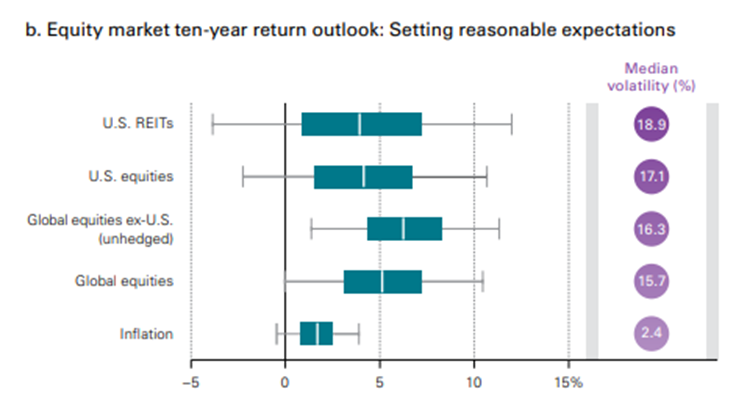
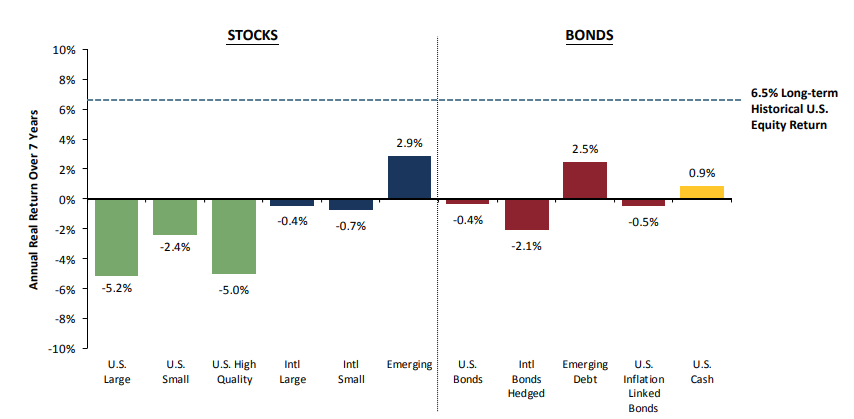
 about what your managers actually do so that you have an understanding of the jolts that will come along. If you read their shareholders communications and think “WTF?”, then you should look elsewhere. Heck, if you search for their shareholder communications and can barely fund anything, I’d conclude “WTF” and recommend that you look elsewhere. And they do tend to be expensive, so don’t overcommit.
about what your managers actually do so that you have an understanding of the jolts that will come along. If you read their shareholders communications and think “WTF?”, then you should look elsewhere. Heck, if you search for their shareholder communications and can barely fund anything, I’d conclude “WTF” and recommend that you look elsewhere. And they do tend to be expensive, so don’t overcommit.

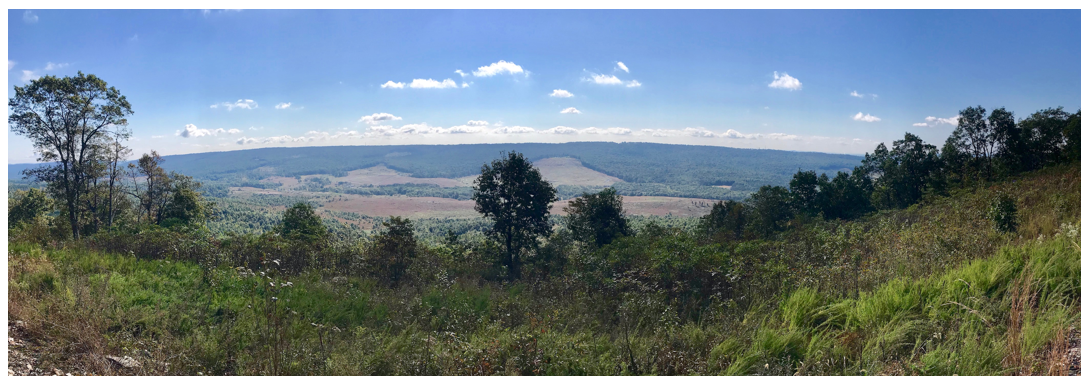

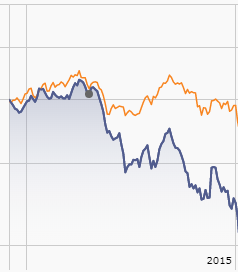
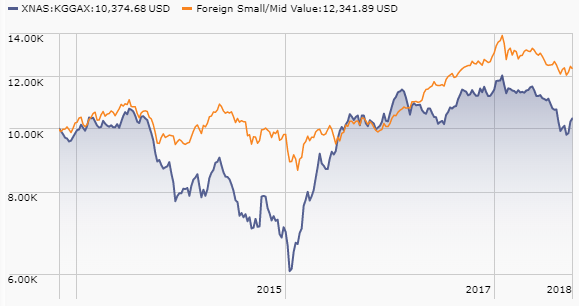

 On September 20, 2018, the Board of Trustees authorized “an orderly liquidation” of the ALPS/Dorsey Wright Sector Momentum ETF (SWIN). From September 21, 2018 through October 22, 2018, the Fund will be in the process of closing down and liquidating its portfolio, and it will cease operation of October 22, 2018.
On September 20, 2018, the Board of Trustees authorized “an orderly liquidation” of the ALPS/Dorsey Wright Sector Momentum ETF (SWIN). From September 21, 2018 through October 22, 2018, the Fund will be in the process of closing down and liquidating its portfolio, and it will cease operation of October 22, 2018. the “storm of the century” that had crashed into Houston. We highlighted some of the opportunities to help, and made personal pledges to do so. The highlight of the response to the storm was surely the work of Houston Texas football player J.J. Watt. Mr. Watt, anxious to help, took to Twitter, pledged $100,000 and appealed to his followers to contribute in support of storm relief. He hoped he might be able to raise $200,000. Instead, he raised more than that in the first hour and more than $800,000 in the first day. By the end of 10 days, it was $27 million. After a year, he’d raised $41.6 million …
the “storm of the century” that had crashed into Houston. We highlighted some of the opportunities to help, and made personal pledges to do so. The highlight of the response to the storm was surely the work of Houston Texas football player J.J. Watt. Mr. Watt, anxious to help, took to Twitter, pledged $100,000 and appealed to his followers to contribute in support of storm relief. He hoped he might be able to raise $200,000. Instead, he raised more than that in the first hour and more than $800,000 in the first day. By the end of 10 days, it was $27 million. After a year, he’d raised $41.6 million …  rethink your connect to social media. For far too many people, our phones serve as portals for a cacophony of discordant headlines, pleas and claims. We increasingly fixated on the immediate, often to the exclusion of the important. I suggested that I was shutting it down, and returning my attention – or what’s left of it – to more measured discourse.
rethink your connect to social media. For far too many people, our phones serve as portals for a cacophony of discordant headlines, pleas and claims. We increasingly fixated on the immediate, often to the exclusion of the important. I suggested that I was shutting it down, and returning my attention – or what’s left of it – to more measured discourse.
 There is no question that some managers take their eye off the ball. Ed Studzinski, who knows an awful lot about what’s going on inside firms, notes that a fair number of managers have become as rich as Croesus. Many of them succumb to the impulse to spend more time thinking about their personal tens of millions than about their investors’ tens of thousands. Others, under pressure from “the business side” of their operations, worry more about attracting and holding assets than about providing the best performance for their investors. And some just lose the passion that once drove them.
There is no question that some managers take their eye off the ball. Ed Studzinski, who knows an awful lot about what’s going on inside firms, notes that a fair number of managers have become as rich as Croesus. Many of them succumb to the impulse to spend more time thinking about their personal tens of millions than about their investors’ tens of thousands. Others, under pressure from “the business side” of their operations, worry more about attracting and holding assets than about providing the best performance for their investors. And some just lose the passion that once drove them. And Andrew Foster is an exception, in oh so many ways. Mr. Foster managed, and now co-manages, Seafarer Overseas Growth and Income (SFGIX). Seafarer is in my personal portfolio and has been the subject of several Observer profiles. The fund is closed to new investors. Since inception, the fund has returned 5.6% annually, against 2.1% for its emerging markets peer group. By every measure we track – maximum drawdown, standard deviation, downside deviation, bear market deviation – it has subjected its investors to noticeably less volatility than its peers.
And Andrew Foster is an exception, in oh so many ways. Mr. Foster managed, and now co-manages, Seafarer Overseas Growth and Income (SFGIX). Seafarer is in my personal portfolio and has been the subject of several Observer profiles. The fund is closed to new investors. Since inception, the fund has returned 5.6% annually, against 2.1% for its emerging markets peer group. By every measure we track – maximum drawdown, standard deviation, downside deviation, bear market deviation – it has subjected its investors to noticeably less volatility than its peers. I did not know nor ever meet John McCain. Although we were both naval officers, his period of service was winding down as mine was beginning. By accident of the calendar, I was considered a Vietnam-era veteran, but was never anywhere near Southeast Asia, so our paths did not cross there. Later, after McCain’s retirement and entry into politics, I met those who had known him on active duty or were in contact with him during his political career. Like Hull and Preble, Spruance and Turner before him, McCain’s leadership skills remained a dominant part of who he was, his personality. He was a warrior who men and women would follow anywhere. And, he was an American hero. In the week after his death, it was said repeatedly that we would not see his like again, which if true, is sad for us as a country.
I did not know nor ever meet John McCain. Although we were both naval officers, his period of service was winding down as mine was beginning. By accident of the calendar, I was considered a Vietnam-era veteran, but was never anywhere near Southeast Asia, so our paths did not cross there. Later, after McCain’s retirement and entry into politics, I met those who had known him on active duty or were in contact with him during his political career. Like Hull and Preble, Spruance and Turner before him, McCain’s leadership skills remained a dominant part of who he was, his personality. He was a warrior who men and women would follow anywhere. And, he was an American hero. In the week after his death, it was said repeatedly that we would not see his like again, which if true, is sad for us as a country.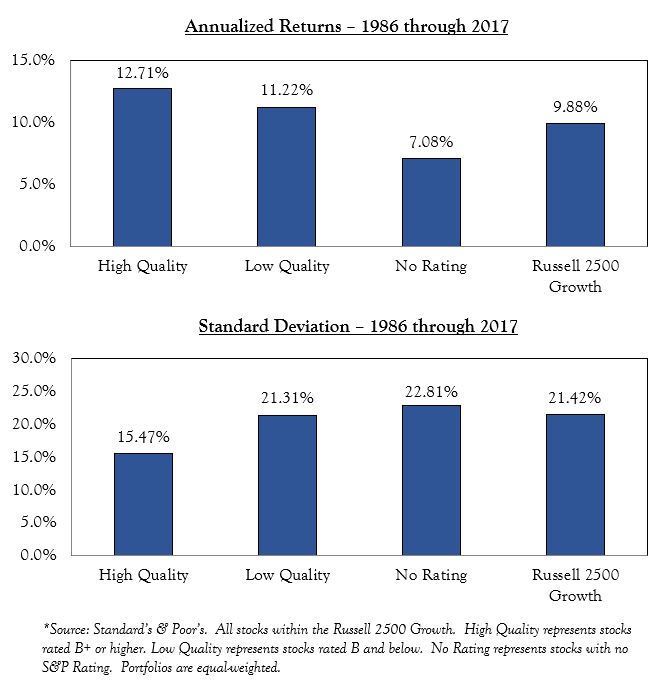


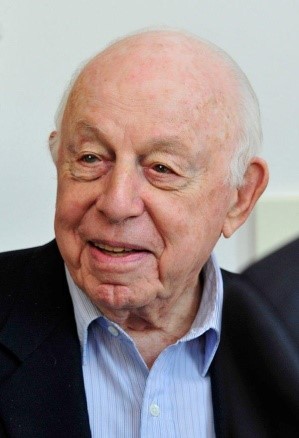 Mr. Arnhold, along with George Soros, founded First Eagle in 1967, guided its growth to past the $100 billion mark and continued serving the firm until 2015. He would be notable if he’d done no more than that. His life story reads like a gripping novel, full of moments of great darkness and brilliant rebound. The lede to
Mr. Arnhold, along with George Soros, founded First Eagle in 1967, guided its growth to past the $100 billion mark and continued serving the firm until 2015. He would be notable if he’d done no more than that. His life story reads like a gripping novel, full of moments of great darkness and brilliant rebound. The lede to 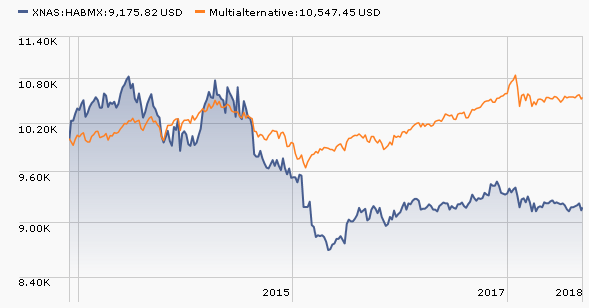
 Who now remembers Julius Baer International (BJBIX)? From 1995 to the start of the financial crisis in 2007, BJBIX outran its peers by a margin of more than 2:1. Then it lost 65% in the crash, which was still better than its peers. The problem was that its rebound off the market bottom was not as vigorous as its peers, and its performance sort of stalled. (Somewhere in there, some marketing genius rebranded Julius Baer as Artio because, he argued, Julius Baer was confusing. FundAlarm ridiculed the move, noting that naming your funds after the Celtic bear goddess wasn’t like introducing a household name into the equation. Artio floundered.) Managers Rudolph-Riad Younes and Richard Pell were shown the door in 2013 and shortly thereafter launched RSQ International Equity (RSQVX).
Who now remembers Julius Baer International (BJBIX)? From 1995 to the start of the financial crisis in 2007, BJBIX outran its peers by a margin of more than 2:1. Then it lost 65% in the crash, which was still better than its peers. The problem was that its rebound off the market bottom was not as vigorous as its peers, and its performance sort of stalled. (Somewhere in there, some marketing genius rebranded Julius Baer as Artio because, he argued, Julius Baer was confusing. FundAlarm ridiculed the move, noting that naming your funds after the Celtic bear goddess wasn’t like introducing a household name into the equation. Artio floundered.) Managers Rudolph-Riad Younes and Richard Pell were shown the door in 2013 and shortly thereafter launched RSQ International Equity (RSQVX).